How to Get Rid of Carpenter Ants in Salt Lake City Homes
Did you know that carpenter ants are often mistaken for termites because both are associated with wood damage? However, their behavior and impact on homes are quite different. In Salt Lake City, carpenter ants aren’t just an occasional annoyance — they pose a serious risk to your home’s structural integrity. Unlike termites, carpenter ants don’t eat wood. Instead, they tunnel through it to create nests, leaving behind hollow pathways that can weaken wooden structures over time.
If you’ve noticed large black or red ants crawling around your property or found strange piles of sawdust near wood surfaces, chances are you’re dealing with a carpenter ant infestation. These ants are particularly attracted to moisture-damaged wood, making places like kitchens, bathrooms, and basements especially vulnerable.
While their damage may not be as immediate as termite destruction, ignoring an infestation can lead to expensive repairs. Recognizing the early signs and seeking professional pest control Salt Lake City can help protect your home from long-term structural harm.
Understanding Carpenter Ants in Salt Lake City
Salt Lake City’s varied climate, with hot summers and occasional wet conditions, creates a favorable environment for carpenter ants. They often seek out moist or decaying wood for their nests, which can be found both outdoors and inside homes.
Key Facts About Carpenter Ants:
- Appearance: Carpenter ants are one of the largest ant species in Utah, measuring ¼ to ½ inch in length. They can be black, red, or a combination of both.
- Nesting Habits: They prefer moist, softened, or decaying wood but will also colonize dry wood. Common nest sites include wooden structures near plumbing leaks, crawl spaces, and window frames.
- Diet: Carpenter ants feed on proteins and sugars but do not eat wood.
- Damage Potential: Although they don’t consume wood, their tunneling can compromise the structural integrity of buildings over time.
According to the University of Utah Cooperative Extension, carpenter ants are more active at night and often create satellite colonies near their main nest, increasing the infestation risk.
Signs of a Carpenter Ant Infestation
Identifying ant infestation early can prevent extensive damage to your home. Here are key indicators:
- Sawdust Piles (Frass): Carpenter ants produce frass, a mix of wood shavings and ant waste, often found near baseboards or wooden beams.
- Hollow-Sounding Wood: Tapping on wood that sounds hollow may indicate tunneling inside.
- Rustling Sounds: Listen for faint rustling noises within walls, especially at night.
- Sightings of Large Ants: Spotting large ants indoors, particularly near moisture-prone areas, is a strong sign of infestation. Research from the National Pest Management Association (NPMA) highlights that carpenter ants are particularly drawn to homes with moisture issues.
How to Get Rid of Carpenter Ants
1. Locate the Nest
Finding the primary and satellite nests is critical. Carpenter ants commonly nest in:
- Wall voids
- Attics and crawl spaces
- Damaged window frames
- Areas around plumbing leaks
Pro Tip: Follow ant trails at night using a flashlight to track their movements back to the nest.
2. Eliminate Moisture Sources
Since carpenter ants thrive in damp environments, fixing moisture problems is essential:
- Repair roof leaks and plumbing issues.
- Improve ventilation in crawl spaces and attics.
- Ensure gutters are clear and direct water away from your home.
3. Use Baits and Insecticides
- Bait Stations: Place protein-based or sweet baits near high-traffic areas. Worker ants carry the bait back to the colony, killing the queen and other ants.
- Residual Insecticides: Apply non-repellent sprays around entry points and suspected nest locations.
Studies confirm that using a combination of baits and non-repellent insecticides is one of the most effective methods for controlling carpenter ant infestations.
4. Seal Entry Points
Prevent carpenter ants from entering your home by:
- Sealing cracks in foundations and walls.
- Installing weather stripping on doors and windows.
- Repairing damaged screens.
5. Natural Remedies
For eco-conscious homeowners, consider these non-toxic options:
- Diatomaceous Earth (DE): Sprinkle food-grade DE along ant trails and suspected nest sites. The sharp particles damage the ants’ exoskeletons, causing dehydration.
- Essential Oils: Peppermint, tea tree, and citrus oils can disrupt ant trails and deter infestations.
When to Call Professional Pest Control
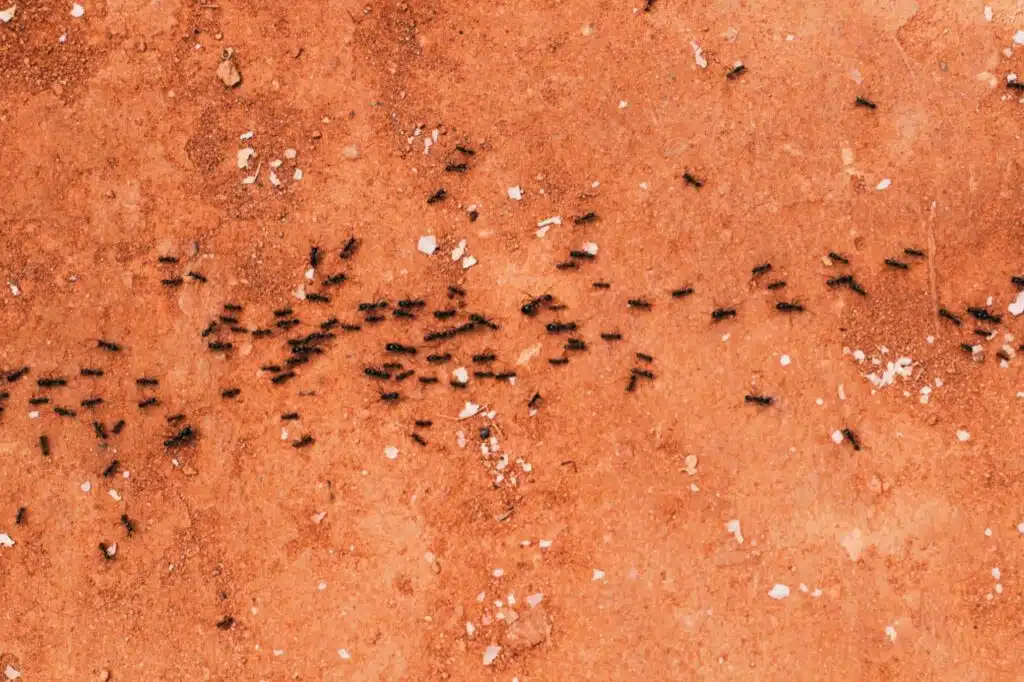
Many homeowners facing such challenges often ask, “Is pest control worth it?” The answer becomes clear when considering the structural damage these pests can cause. Severe infestations often require expert intervention. Pest control professionals can:
- Accurately identify and treat hidden nests.
- Apply targeted treatments that are safe for your family and pets.
- Provide long-term prevention strategies.
In Salt Lake City, companies like Salt Lake Pest Control offer fast, effective solutions tailored to local pest problems, including carpenter ants.
Preventing Future Carpenter Ant Infestations
Taking proactive measures can help protect your home:
- Maintain Proper Ventilation: Reduce humidity in attics, basements, and crawl spaces.
- Repair Wood Damage: Replace any rotting or water-damaged wood promptly.
- Trim Vegetation: Keep trees and shrubs at least 3 feet away from your home’s exterior.
- Store Firewood Properly: Keep firewood stacks at least 20 feet away from your house and elevate them off the ground.
The University of California Integrated Pest Management (IPM) program emphasizes the importance of habitat modification and exclusion techniques for long-term pest control success.
Conclusion
Carpenter ants aren’t just annoying—they can seriously damage the structure of your home. By spotting the signs early and taking swift action, you can avoid costly repairs. If you’re in Salt Lake City or nearby areas like West Jordan, Ogden, Sandy, or Draper, contact Salt Lake Pest Control for expert ant extermination and year-round protection for your home.
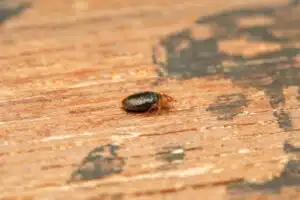
Tick vs. Bed Bugs: Differences and Similarities
Understanding the differences between two common blood-sucking pests, ticks and bed bugs, is important. We want to make sure you know exactly what kind of pests you’re dealing with,
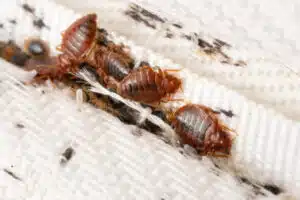
Where Do Bed Bugs Come From, and How to Prevent Them? A Guide for Salt Lake Residents
Bed bugs can be a major nuisance and cause various physical and emotional problems, including skin irritation, anxiety, and sleep disturbances. In Salt Lake City, bed bugs are a growing concern, especially in apartment buildings, hotels, and other high-density living spaces. But where do bed bugs come from, and how can you prevent them from infesting your home or property?
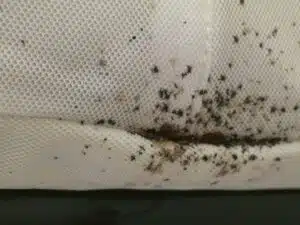
Are All the Tiny Black Bugs in My Bed Bed Bugs?
Sleeping is one of the things that we look forward to after a very long day. We recharge ourselves by sleeping by the end of the night to be refreshed the next day. But we can be disturbed even during our sleep by pesky pests crawling and hiding where we sleep. That’s terrifying, right? Pests that are known to annoy us during our sleep are bed bugs. They are usually found where humans and other pets sleep. Bed bugs can be almost anywhere in the world – even in your Saltlake home! They can be annoying because they suck your blood and leave you with an itch and bumps in the infected area. So blood attracts them, even the blood of other animals. Therefore, you should conduct bed bug removal if you have them. If you find bugs on your beds, you might think they are bed bugs. But are they?
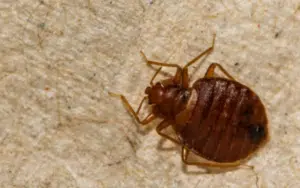
Can Bed Bugs Live in Your Car?
Bed bugs are small, flat, and oval-shaped insects that feed on the blood of humans and animals. During the day, bed bugs hide in cracks and crevices around beds, furniture, and baseboards. You can also find them in mattresses, bed frames, blankets, carpets, and other fabric items throughout your home. While it is possible for bed bugs to infest your car, they’re less likely to do so than inside a house or other structure.
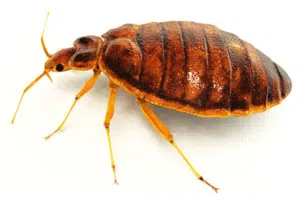
How to Find Bed Bugs in Your Home
Bed bugs are small, blood-sucking that feed on human and animal blood. They belong to the family Cimicidae, contain over 100 species, and have been around for millions of years.

Can Bed Bugs Jump?
Bed bugs are a common household pest that can be difficult to get rid of. These tiny insects can live in any crevice or crack in your home and feed on blood.
